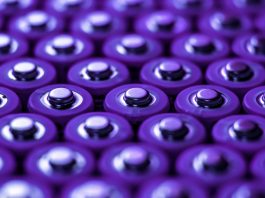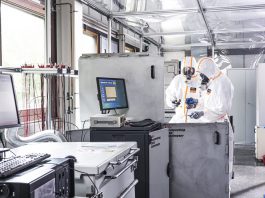Scientists design stretchable, free-form lithium-ion batteries that can be printed on clothing and utilised in digital wearable devices.
A Korean research team has developed a soft, mechanically deformable, and stretchable free-form lithium-ion battery, which can be used in the development of wearable devices.
The scientists examined the battery’s feasibility by printing them on the surface of different clothing items. The research team, led by Dr Jeong Gon Son from the Soft Hybrid Materials Research Centre at the Korea Institute of Science and Technology (KIST), announced that they had developed a lithium battery in which all of its components – including the anode, cathode, current collector, electrolytes, and encapsulant – are stretchable and printable. The lithium battery developed by the team possesses a high capacity and free-form characteristics that are suitable for mechanical deformation.
High-performance, smart wearable devices
Researchers intended to develop a product that would satisfy the rapidly increasing demand for high-performance wearable devices, such as smart bands, as well as implantable electronic devices, such as pacemakers, and soft wearable devices for use in the realistic metaverse. In order to accomplish this, the team commenced their development of a battery that is both soft and stretchable like the human skin.
The hard inorganic electrode of a conventional battery comprises the majority of the battery’s volume, making it difficult to stretch. Other components, such as the separator and the current collector for drawing and transferring charges, must also be pliable, and the liquid electrolyte leakage issue must also be resolved.
To enhance the stretchability of the free-form lithium-ion batteries, the research team avoided employing materials that were unnecessary for energy storage, such as rubber. Then, a new soft and stretchable organic gel material was developed and applied based on the existing binder material.
This material firmly holds the active electrode materials in place and facilitates the transfer of ions. In addition, a conductive ink was fabricated utilising a material with excellent stretchability and gas barrier properties. The conductive ink serves as a current collector material that transfers electrons as well as an encapsulant, which can function stably even at a high voltage and in various deformed states without swelling, due to electrolyte absorption.

Free-form lithium-ion batteries
The battery developed by the team is also able to incorporate existing lithium-ion battery materials, as they exhibit excellent energy storage density (~2.8 mWh/cm2) of a level similar to that of commercially available hard lithium-ion batteries at a driving voltage of 3.3 V or higher.
All of the constituent components of the team’s free-form lithium-ion batteries possess the mechanical stability to maintain their performance even after repeated pulling of the battery 1,000 or more times, a high stretchability of 50% or above, and long-term stability in air.
Moreover, the research team directly printed the electrode and current collector materials on either side of an arm warmer, which was made of spandex, and applied a stretchable encapsulant to the material. This demonstrated the ability to print a stretchable high-voltage organic battery directly on to clothing. Using the resulting battery, the research team was able to continuously power a smart watch even when it was being put on, taken off, or stretched.









